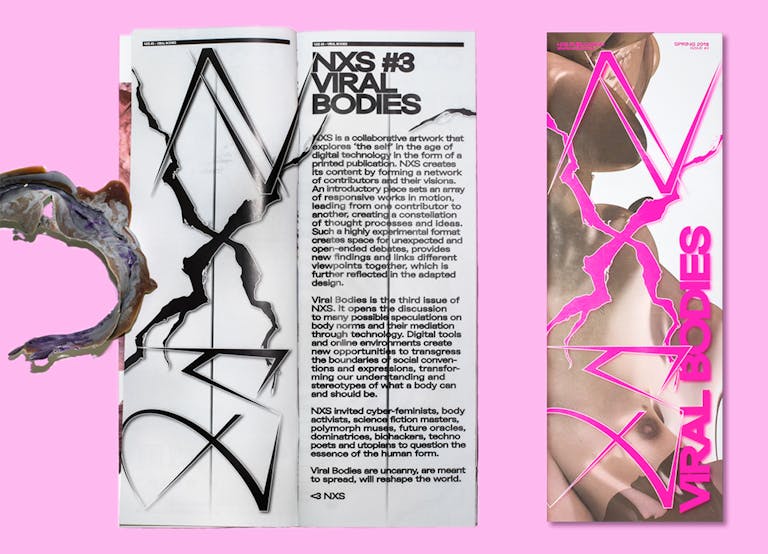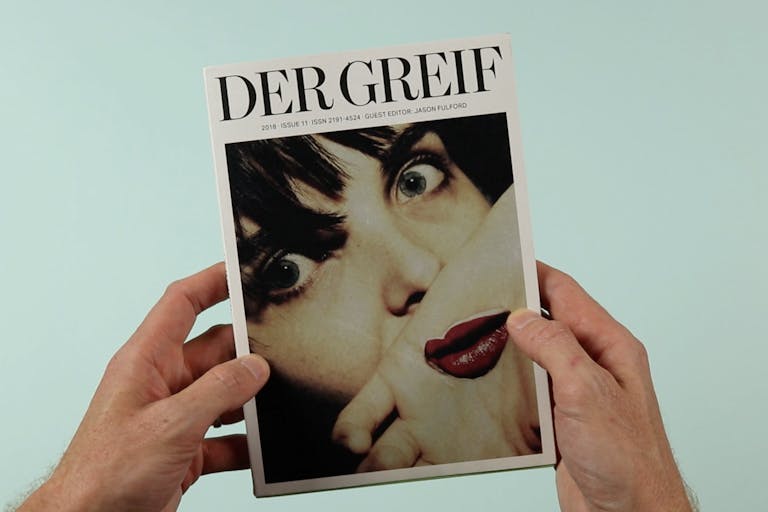A magazine about the opioid crisis
The Opioid Crisis Lookbook (OCL) is a magazine about the opioid crisis worldwide, with a focus on America, where more than 93,000 people died of a drug overdose in 2020 alone. The magazine makes for uncomfortable reading because it is quite literally a “Lookbook”: 148 pages devoted to what opioid addiction looks like.
There are pictures of people taking drugs published here, but much of the material is less expected: several spreads are devoted to Justin Bieber skating, for example, and there is a full-page picture of Robert Pattinson in Twilight. One page features a kind of meme of withdrawal, with a “sweaty pillow”, a “copy of OCL issue 1”, and the strapline: “In your old room at your parent’s house, phone confiscated… it starts with a yawn, followed by a sneeze, then it starts to freeze inside”.
There is excellent journalism about the crisis in here, like an interview with the architect Mark Wasiuta about the role of the detox centre in American life. But a lot of the pages don’t so much dissect the causes of the crisis as showcase the art and aesthetic that has come out of it. Editor Dustin Cauchi, who is a former addict, explained to me via Zoom that while OCL is a critique of big pharma and the political system that has decimated millions of people’s lives, it is also a space to “give space to marginal narratives by showing and celebrating the cultural manifestations of the crisis, guilt-free”.
That tension — between showcasing the horror of the epidemic, and the jokey, almost conspiratorial way in which the magazine reflects the culture around opioid addiction — is what makes OCL so startlingly original, and sometimes beautiful. But it also makes OCL difficult to swallow: this is probably the most challenging magazine I have ever read.
Dustin talked me through the inspirations behind the project.
Why did you start The Opioid Crisis Lookbook?
I started OCL after long observing the unfolding of the opioid crisis in the US. Putting it simply, whatever had been said institutionally and publicly about drug addicts and addiction, for the past 50 plus years, seems to disintegrate with the opioid crisis in the US. Mainly because with OxyContin — the drug largely responsible for the crisis — came the birth of a new kind of addict: the white, middle-class professional, who was perhaps prescribed OxyContin after an injury, and became addicted to it. When OxyContin’s formula changed, and then it stopped being prescribed so recklessly by doctors as OD deaths rose, that same 40-year-old found himself on the streets scoring smack in his Ralph Laurens and dealing with a culture he had no idea existed.
The spawn of this type of addict changed everything within the drug addict community, it also changed the perception of addiction in America and shook the recovery industry. This new reality fast-forwarded the Reagan-era war on drugs — where drug addicts could be conceptualised as a non-white threat that existed outside of normal society — to an America in which 2.1 million people are addicted to opioids.
The magazine looks, in a weird sort of way, like the nineties, or the early 2000s. Why is that?
The genesis of the crisis can be situated somewhere in the mid 1990s. The Sackler family-owned pharmaceutical company Purdue Pharma developed OxyContin in the early 1990s, with FDA approval in 1995, so in a way, the visual references from that period combined with my own autobiography leave the stylistic traces that you refer to.
I’m interested by all the celebrity pictures in the magazine: Justin Bieber, Robert Pattinson etc. Why is the magazine concerned with celebrity culture?
Following the darkness of the heroin 90s, the cultural manifestations of drug use and addiction started to change. The gloom and cringe of heroin chic evolved into a lighter, pop language led by fallen Disney Channel angels like Lindsey Lohan et al. Of course, Hollywood has a long, dark history of drug related deaths and scandals. But after the 90s there was a shift in the way people talked about drug consumption publically; words like “rehab”, “relapse” and “addiction” also became part of a common lexicon.
When I started OCL, the first person to really connect with it and push it was Courtney Love. This connected OCL to other celebrities very early on, which is cool I guess. OCL is not some exclusive club though. Readers vary from Midwestern mums with oxy problems, people in rehab, people dealing in culture, homeless, junkies.
What is your own personal relationship to addiction?
I was a heroin addict for many years and then I was on Suboxone, a prescription drug that’s used to help with getting off harder opioids. I was one of the first people in the EU to be prescribed Suboxone. At the time it was considered a wonder drug with “minimum side effects”; this wasn’t the case and getting off it was a second hell. I grew up in a hard neighbourhood so my relationship to drugs as an idea and drug addicts was already formed before I even considered getting high. I think that my personal experience as an addict and consequential hardships, rehab, and dreams, ambitions, aspirations etc make it easier for readers to connect with OCL.
I suppose your personal experience also legitimises what you’re doing. Because when you read the magazine, it looks ‘cool’ in a way. So there’s a certain part of your mind that thinks: is he glamourising being addicted to opioids? The fact that you yourself have been addicted stops the reader from worrying too much about that.
I think that readers should always “worry” about what they are reading irrespective of legitimacy or not. I don’t think OCL ‘glamourises’ or ‘doesn’t glamourise’ opioid addiction. I am not a moralist. Of course, there are objective realities: it’s not like I’m saying drug addiction is positive, it is never positive. But I want to look at things in a different way. OCL is about giving space to marginal narratives by showing and celebrating the cultural manifestations of the crisis, guilt-free. This can be drugged up people on the streets, historical notes, aesthetic material, news, cultural references, masked robbers; the trap life. This mix of materials is an invitation for new connections, for new meaning. In the process there can be glamorisation and that’s also ok. I love glamour.
So is the magazine saying: there is a visual culture around opioid addiction, and this is a magazine that showcases that visual culture. And it’s not passing judgement; it’s not saying this is a great thing, or this is a terrible thing.
It’s more like I’m saying that we need to find our own new measures of judgement. No more shame, no more guilt trips, no scapegoating; if this is who you are right now, whatever that is, own it.
But then, surely there is the problem of glamorisation?
Celebrating cultures that emerged out of widespread opioid addiction doesn’t cancel out my critique of the political system that caused the crisis. This disaster was created because a group of private individuals wanted to become richer. If it wasn’t the Sacklers it would have been someone else, but the crisis is a perfect case study of the paradoxes of neoliberal capitalist societies.
I tend to disagree with the negative connotations of glamorisation, as that would mean trying to suppress the beauty of desire in human psychology.
So this is a political magazine?
Yes political (lol). I never related to most critiques of capitalism, because that would imply faith in some other political system, which I don’t have. But I have faith in people. The whole concept of empowerment with OCL is not some nostalgic call to arms. It’s more like: you’re in a system that doesn’t care about you, it seems like things are going to be this way for a while; stop trying to live up to models that you fundamentally disagree with, stop feeling guilty, own who you are and manifest that hard. I am not alone, the drug culture I am talking about is no longer some sort of micro niche subculture. We are talking about millions of people who are addicted to opioids in the US alone. So yes, the magazine is political in this sense; it is about people. I suppose if anything legitimises what I do, it’s that.
As a former addict, do you ever feel like immersing yourself in the visual language of the opioid crisis endangers your recovery?
I try to not live by the clean/ relapse duality. It’s not easy. During the early OCL days I used to spend days in DM talking to readers from across the US and elsewhere who were in tough spots. It is important for me to hear people out. This becomes overwhelming sometimes and can confront you with a lot of feelings. There is definitely a safer way of managing myself psychologically but I want to live freely. I`m done hiding.
So your project is about helping people and replying to people who write in, but it’s also about self-acceptance?
There is truth in that, but putting it like that makes it sound like I`m running a self-help thing. The magazine isn’t a self-help book, I would never dare tell others how they should live their lives. Yet, it would be a bit weird if I removed the human element from all of this, because ultimately what we mainly deal in are painful and dark quotidian realities that people experience. The magazine doesn’t have to be interpreted as pure gloom, it is also beautiful, senseless, funny, bold, and a weapon of empowerment. I hope that OCL can keep on being an exchange. There is darkness in this exchange but there’s also a lot of life.
theopioidcrisislookbook.bigcartel.com













